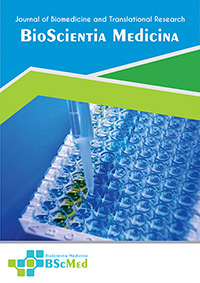Main Article Content
Abstract
Background: Childhood sunburn significantly elevates lifelong skin cancer risk, underscoring the need for effective prevention. While sunscreen, protective apparel, and shade-seeking are advocated, a quantitative synthesis of their efficacy in children is crucial. This meta-analysis aimed to consolidate and quantify the evidence on the effectiveness of these core sun protection strategies in preventing pediatric sunburn.
Methods: A systematic search of PubMed/MEDLINE, Scopus, Cochrane CENTRAL, and Web of Science (January 2014 - December 2024) identified randomized controlled trials and cohort studies evaluating sunscreen, protective apparel, or shade-seeking behaviors for sunburn prevention in individuals aged 0-18 years. Data on sunburn incidence were extracted, study quality assessed, and pooled Risk Ratios (RR) with 95% confidence intervals (CI) calculated using a random-effects model.
Results: Six studies (two RCTs, four cohort studies) involving 8,500 children were included. Regular sunscreen use (SPF ≥30) significantly reduced sunburn incidence (RR 0.65, 95% CI 0.55-0.77). Protective apparel use also demonstrated substantial protection (RR 0.70, 95% CI 0.60-0.82). Enhanced shade provision and shade-seeking behaviors effectively lowered sunburn risk (RR 0.75, 95% CI 0.62-0.90). Multi-component strategies combining these approaches showed consistent protective benefits.
Conclusion: This meta-analysis provides robust quantitative evidence that diligent sunscreen application, consistent use of protective apparel, and active shade-seeking are all significantly effective in reducing sunburn incidence in children. These findings strongly support multifaceted public health initiatives emphasizing comprehensive sun protection to safeguard pediatric skin health.
Keywords
Article Details
As our aim is to disseminate original research article, hence the publishing right is a necessary one. The publishing right is needed in order to reach the agreement between the author and publisher. As the journal is fully open access, the authors will sign an exclusive license agreement.
The authors have the right to:
- Share their article in the same ways permitted to third parties under the relevant user license.
- Retain copyright, patent, trademark and other intellectual property rights including research data.
- Proper attribution and credit for the published work.
For the open access article, the publisher is granted to the following right.
- The non-exclusive right to publish the article and grant right to others.
- For the published article, the publisher applied for the Creative Commons Attribution-NonCommercial-ShareAlike 4.0 International License.





